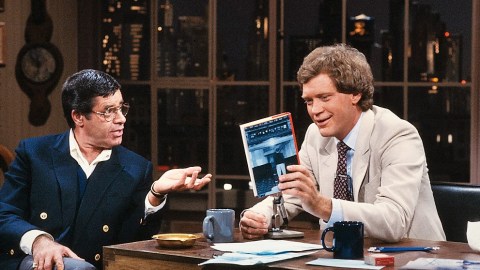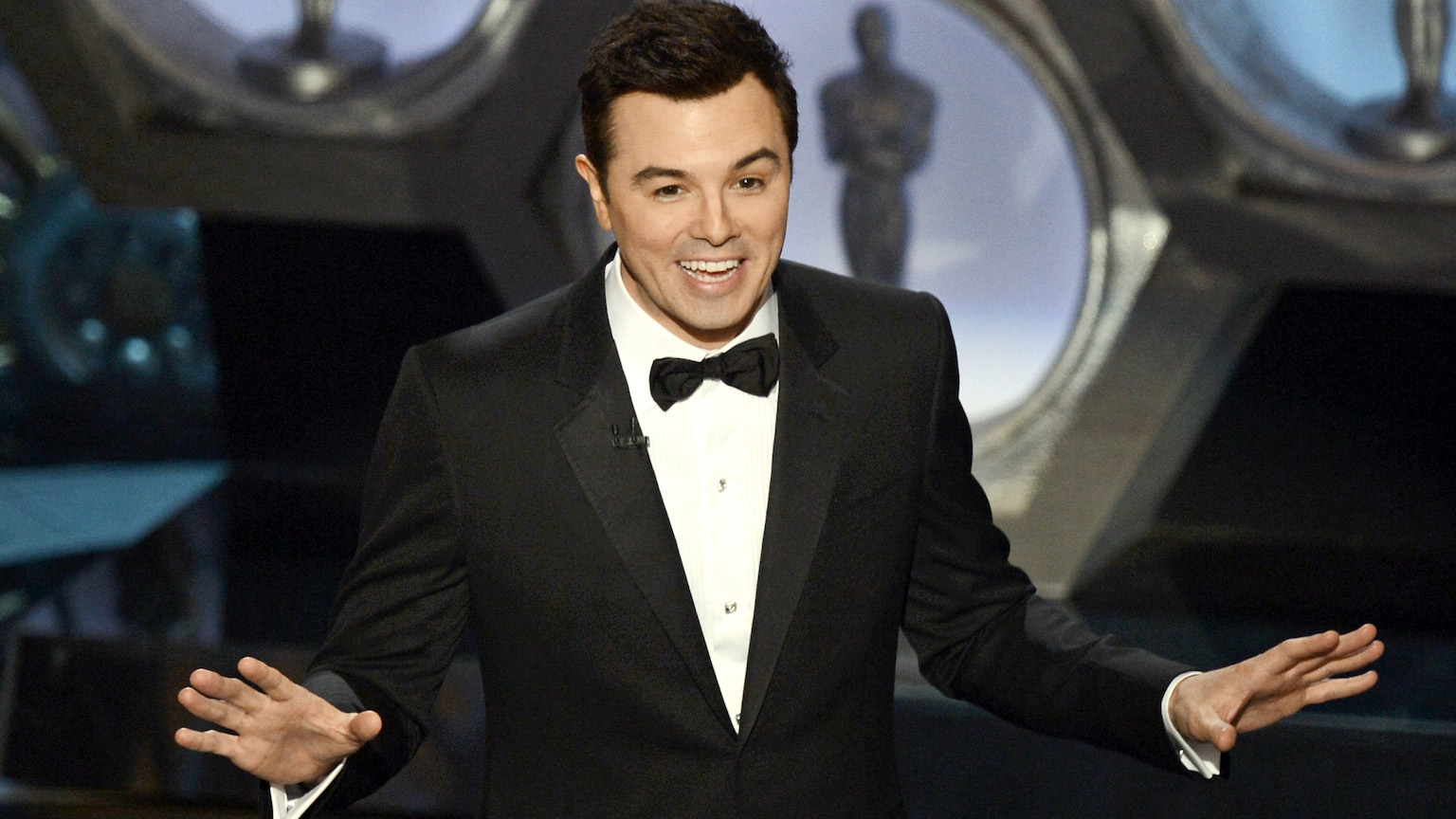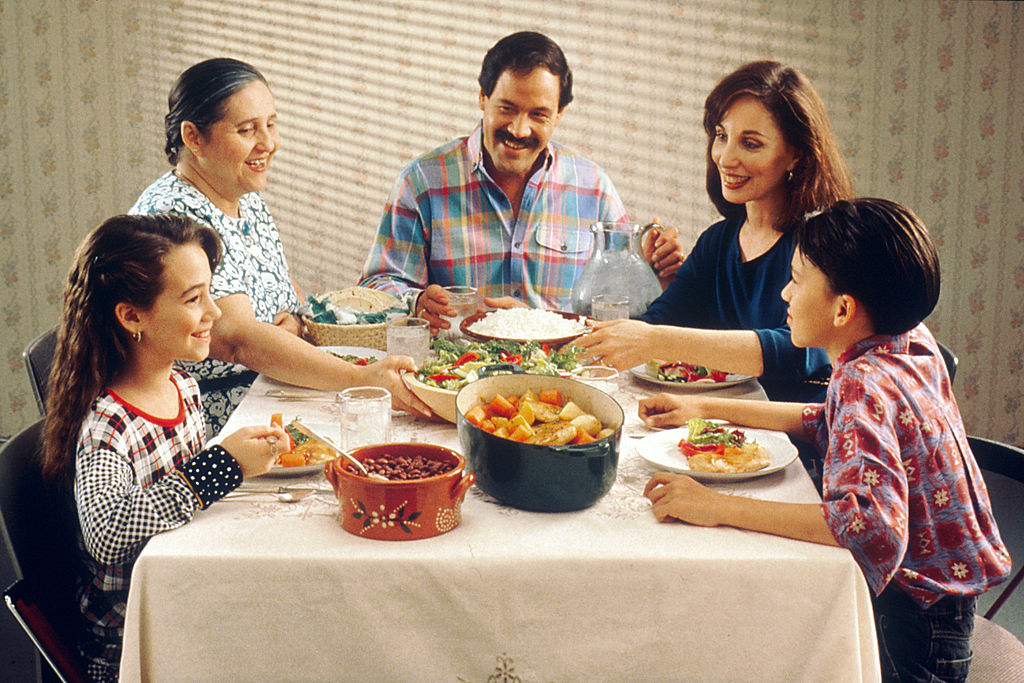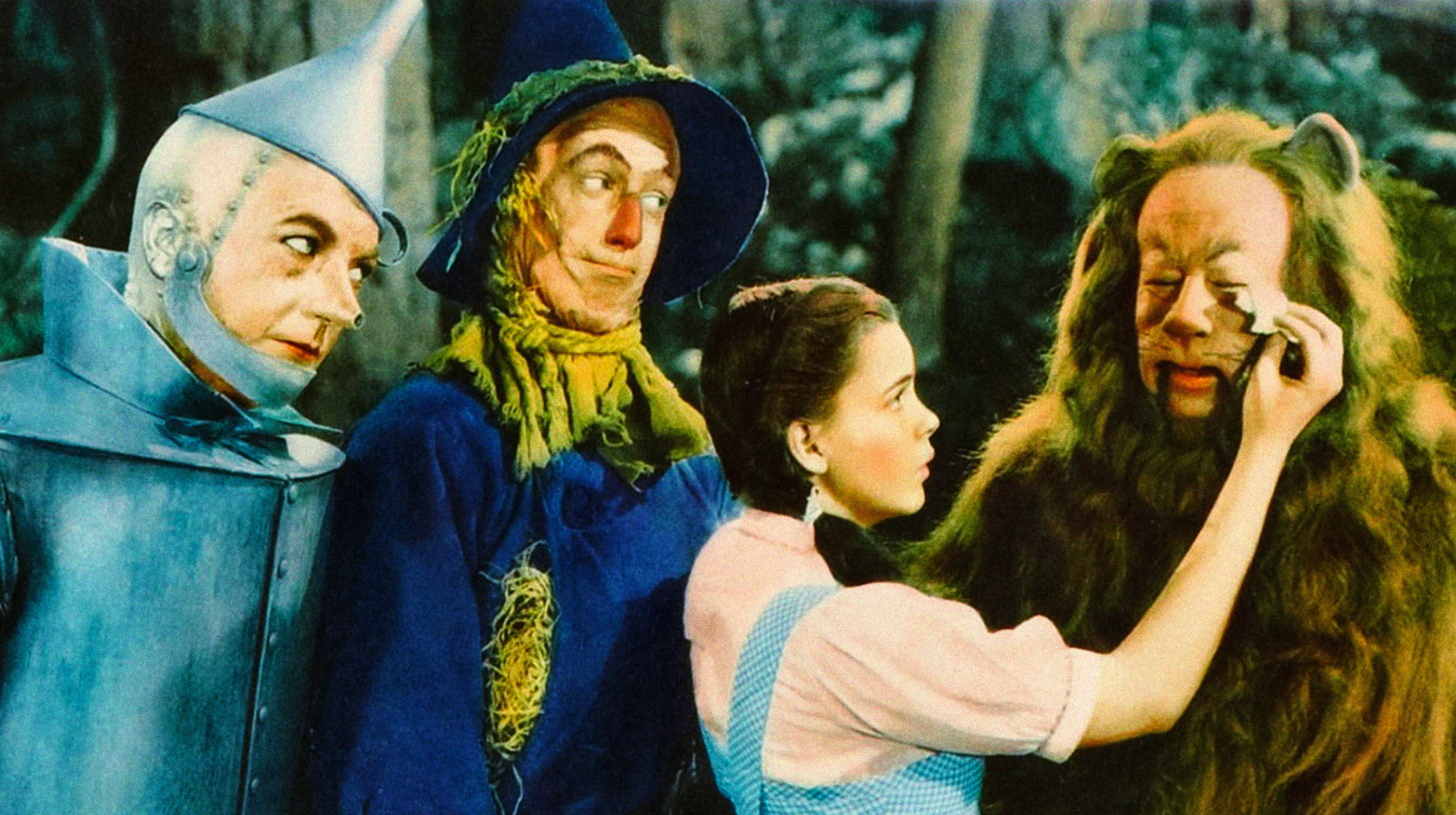Why have late-night talk show ratings collapsed?

- Critics agree that the quality of late-night shows in the U.S. has been decreasing steadily.
- This is a little surprising, considering that the format has thrived ever since it was introduced during the “golden age” of television in the previous century.
- However, many late-night shows have dug their own grave through their obsession with former president Donald Trump.
Somewhere on the internet, there’s a YouTube video of Citizen Kane star Orson Welles delivering a monologue as Sir John Falstaff on The Dean Martin Show, a popular late-night variety show that ran from 1965 until 1974. While putting on makeup and dress, Welles — who began his career in entertainment as a stage actor — reflects on the genius of Shakespeare as well as the portly knight he was transforming into.
To a 21st century viewer, the act that ensues is as spellbinding as it is jarring. “Imagine,” one person writes in the comments, “a [present-day] prime-time TV show devoting almost ten minutes to a lone man on a bare stage, putting on makeup and quietly reciting Shakespeare. Civility, culture, dignity, and a pace that requires calm focus. We won’t be seeing the likes of this any time soon.”
Media analyst Bill Carter also senses some kind of a decline. “If late-night television had a true golden age,” he reported for CNN, “we probably passed it… After a period of what looked like unchecked expansion, with new late-night shows popping up like wildflowers (or sometimes weeds), the reaper seems to have arrived. Late night’s future is now looking much more limited, if not completely grim.”
From primetime to anytime
The downfall of late-night TV cannot be ignored. Several shows, from Full Frontal with Samantha Bee to Desus & Mero, have been cancelled this year alone. The ones that have stayed on aren’t faring much better: The Tonight Show Starring Jimmy Fallon currently has an audience of roughly two million people, which is but a small fraction of the 11 million that tuned in for the show’s 2014 premier.
The reasons for this downfall are less obvious. One popular explanation is that the late-night show format, conceived during the golden age of television, is no longer viable thanks to streaming services. Instead of sitting down for a program at a fixed time of day, contemporary audiences prefer to watch whenever they want through subscription services like Netflix. In other words, late-night is no longer late at night.
Interestingly, many late-night shows perform well on YouTube, where clips from their television episodes can be watched at leisure and out of order. This suggests that, while late-night shows have managed to adapt to new forms of technology and distribution models, there is something about them — perhaps their sense of urgency — that fails to capture our current zeitgeist.
Poking fun at politics
Others link the downfall of late-night shows to the rise of Donald Trump. At first, Trump’s presence in the media reinvigorated the late-night format. The number of shows increased rapidly, while the shows themselves changed their areas of interest. Where some hosts previously had been poking fun at Hollywood, now they were turning their attention toward Washington.
A good example of this development is Late Night with Seth Meyers, whose segment “A Closer Look” used to cover different topics, but is now almost exclusively devoted to covering Trump, his administration, and family. On YouTube and Snapchat, the segment has garnered more interest from the public than other elements of the show, and is often presented as a show in itself.
Trump may have been good for ratings but bad for the overall quality of late-night shows. While heads of state have been regularly ridiculed by these types of programs since the 1960s, no one has received the same amount of attention as the former president. One sociologist estimates that Bill Clinton was the butt of only 1,700 jokes in 1998, while Trump was the butt of 3,100 jokes in 2017.
Their universal obsession with Trump made it difficult to tell many of the late-night shows apart. “Maybe in 2015, you could say that Seth Meyers, Trevor Noah, and Stephen Colbert’s shows had their own unique identity,” writes Anupras Mohapatra in the Daily Cardinal. “After Trump got elected, however, you could bounce around from monologue to monologue and hear the exact same jokes.”
Supposedly, the people writing late-night shows got frustrated because Trump-related news was often so surreal that it was difficult to satirize. “I could write jokes for 800 years and I’d never think of something funnier than Trump booking the Four Seasons for his big comeback presser, and it turning out to be the Four Seasons Total Landscaping,” says one writer.
Although not a conventional late-night show, the animated series South Park — known for satirizing public events in semi-serial stories — decided to ignore Donald Trump altogether. Instead, they casted a fictional, pre-existing character to assume the role of president. While this fictional character resembles Trump, he is not a direct representation of him.
An unwavering obsession
Crucially, late-night’s interest in Donald Trump has not decreased since he left office. On the contrary, shows continue to talk about him despite the fact that, as a private citizen, he is unable to enact direct influence over the government and is not involved in international affairs. To this point, one could argue that their extended coverage is helping him stay relevant when he could have been forgotten.
“I fear he’ll never leave the public eye,” Zack Bornstein, who has worked on Saturday Night Live and Jimmy Kimmel Live, told CNBC. “This isn’t the kind of evil dude who goes quietly into the night and starts painting watercolors. He’s going to start his own media company to fuss 24/7. And then there will be the trials. We’re going to have to talk about those.”
This prospect has led many seasoned late-night writers to look for other jobs. In a Facebook post, Rebecca Drysdale, the former head writer of The Tonight Show Starring Jimmy Fallon, explained that, “The project of… doing material about Trump, has led to divided creative teams, anxiety, tears, and pain. I can’t decide the outcome of this election, but I can make the choice for myself, to vote him out of my creative life.”
When you stick to the same subject for a prolonged period, it’s only a matter of time before your material will start to sound repetitive or cheap. Mohapatra mentions Seth Meyers chuckling over cheesy nicknames for Trump, a list which included “Mayor McTreason.” Variety reporters point to Samantha Bee calling Trump’s daughter Ivanka a “feckless cunt.”
The tone of most late-night shows has devolved from jovial to concerned to aggravated and finally to cynical. This, many believe, is not good for comedy. “When comics abandon humor and go with anger instead, they become just another ‘outrage’ host,” Danna Young, a communications professor at University of Delaware’s Center for Political Communication, told CNBC.
Also worth noting is the fact that late-night discussions of political issues have generally moved from dialogue to monologue. In the previous century, these shows were known for sparking fierce but insightful debates among diverse groups of guests. Today, segments like “A Closer Look” or programs like Last Week Tonight with John Oliver provide a mostly one-way conversation.
The future of late-night television
Will late-night shows disappear in the near future? It’s possible, but unlikely. A resilient and revered genre of television, late-night has historically attracted some of the finest writers and producers in the industry. To work in a leading capacity for one of these programs is, for many entertainment professionals, the very apex of their career. Talent will keep coming.
The late-night genre also has occasionally proven to be ahead of its time — something that future shows could try to harness. Just look at what many people consider to be the first primetime late-night show, The Faye Emerson Show. Not only was this show, like its immediate successors, hosted by a woman, but its host also went out of her way to interview the likes of Joseph Stalin.
Imagine that happening today.





